You might think laundry is your least favourite chore at home.
But next time you put a load on, spare a thought for these busy staff taking care of both patients and staff working at hospitals in Grampian.
Over the past three years, a team of 45 dedicated staff have washed 20 million items of clothing, patient gowns, mops, bedsheets and curtains.
We were invited for a behind-the-scenes tour to find out how much work it takes to run the impressive facility tucked away in the corner of the Foresterhill site.
And we find out just how much damage can be caused when staff wearing scrubs forget to take their pens out of their pockets.
So how busy are the NHS laundry team?
Laundry superintendent Richard Brown has given us an insight into how much dirty washing the team actually deal with every week.
It’s a slick operation which helps hardworking staff fulfil all the orders coming in for clean laundry from all the hospital wards.
Each week they clean around 49,000 pieces of bed linen along with 37,000 towels.
“We put out over 150,000 items a week and that’s not really a busy week, it could be more.” Richard explains. “The majority of it is scrubs suits – and a lot of mops.”
Mondays are often the busiest day with staff arriving to find crates of dirty laundry delivered to the site over the weekend.
Dirty washing is taken up in lifts to the first room where the bags are emptied with the linen, bed screens and other items placed on a conveyor belt.
Green bags are used for scrubs, white for linen and blue for personal items belonging to patients.
All the patients’ clothes are marked up by sewing room staff before they’re put through the system to prevent anything going missing.
Contaminated laundry arrives in red bags which disintegrate in washing machines to keep staff safe from any bacterial infections.
Linen can go missing…
Small machines are used to clean mops, bags and personal linen and can take up to 100kg in a load.
There are also two large machines capable of taking in 12 loads at a time – and they’re all washed clean in just 17 minutes.
The clean garments are then transported up a conveyor belt to the doors of industrial tumble driers.
Due to the scale of the operation, and the size of the geographical area, linen can sometimes go missing after it’s delivered to hospital sites, possibly ending up in the wrong place.
The laundry service also washes ambulance blankets, and staff can also take in washing from NHS Highland hospitals when their laundry machines break down.
It costs a total of £34,000 a week to run the facility with £2,700 of this going on cleaning products.
“Staff are doing a really important job,” Richard says. “There’s never been an issue with staff pulling together, or getting the job done.”
Why is the laundry so important?
Richard is keen to highlight just how important the NHS laundry service is for all the city and community hospitals on the Grampian estate.
If there was not enough linen for beds, he says, there would be fewer beds available for patients to come into the hospital and therefore fewer operations.
“It doesn’t seem like the most glamourous of jobs but when you think about what you’re doing it for it’s worth it,” Richard says. “It’s what keeps me going.”
His colleague Gail Bowers, who also works as a laundry supervisor, added: “I’m a very strong believer that the workers at the bottom are just as important as the staff at the top.
“We’re providing a service, you know there’s patients in hospital and you’re doing your bit for them.”
Biggest challenges?
Finding space to store laundry can be a big challenge for the team whose work takes over the whole building.
Ventilation can be challenging; it can be a really hot place to work in the summer months and it can be cold during the winter.
But the biggest bugbear for staff is discovering medics have forgotten to take their pens out of scrub suit pockets.
It’s been an even more challenging situation during Covid with every member of hospital staff allowed to wear scrubs.
These are all laundered on-site and, although restrictions have been relaxed, some non-theatre staff still prefer to wear them rather than their own uniforms.
The laundry service deals with around 14,000 scrub suits a week and it can be a costly mistake when a medic leaves a pen inside a garment going into a machine.
“One pen in one pocket can ruin 100 scrub suits which is a whole load, so that can be a bit of a challenge,” Richard says.
If the ink has leaked onto the sleeve of the garment there’s a chance that sewing staff can mend it.
But if it ends up anywhere else on the material it’s then left completely ruined.
“It’s a lot of waste,” Richard says. “After a while, we’d have to buy in more stock. It’s costing money just because someone has left a pen in a pocket.”
Richard says all the staff working in the NHS laundry have got a “can-do” attitude and work hard as a team to make sure they complete all the orders.
“Sometimes being short-staffed can be a challenge for the laundry workers,” he says.
“But I don’t think we’ve ever struggled to get the orders out, we always do.”
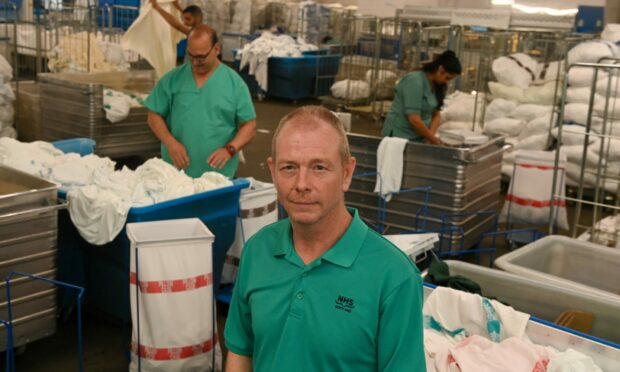
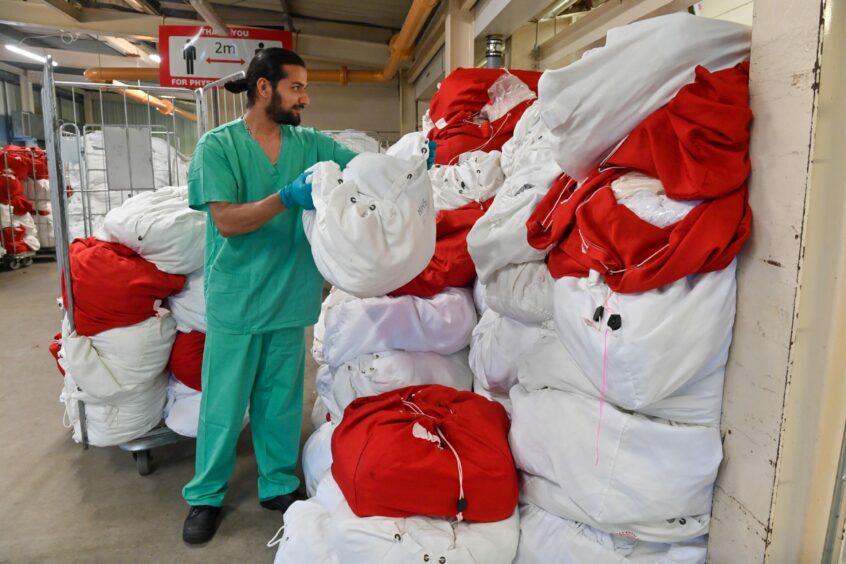

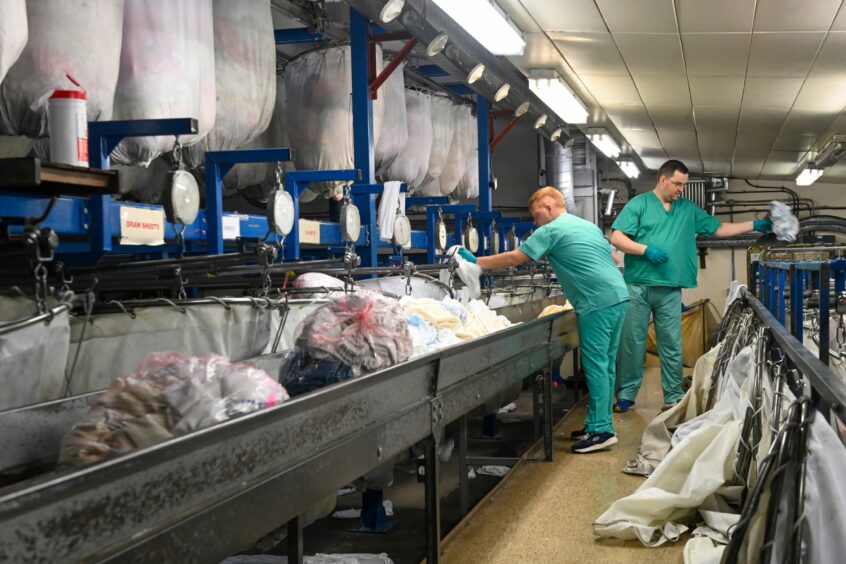
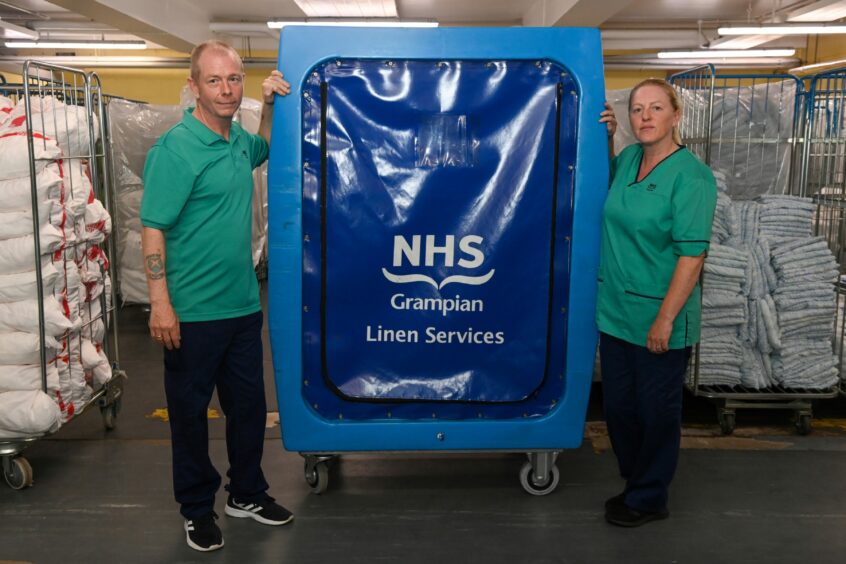

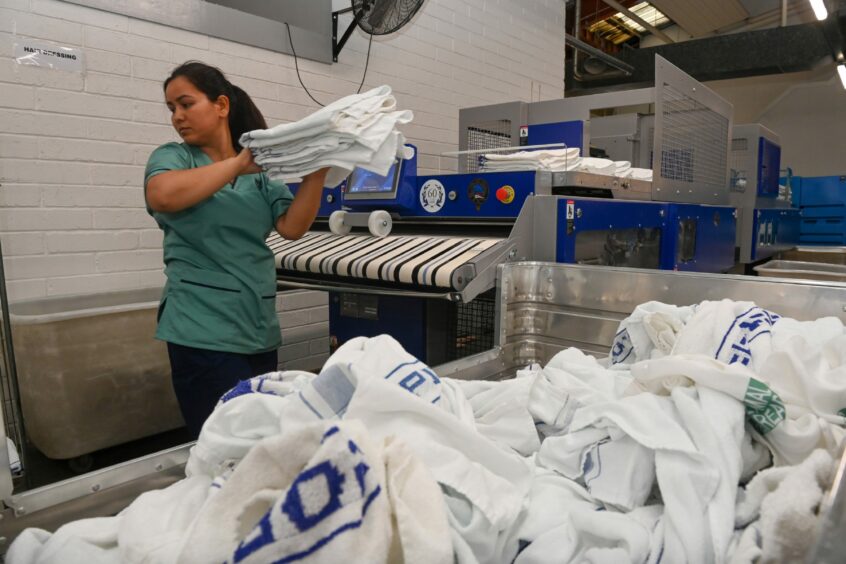
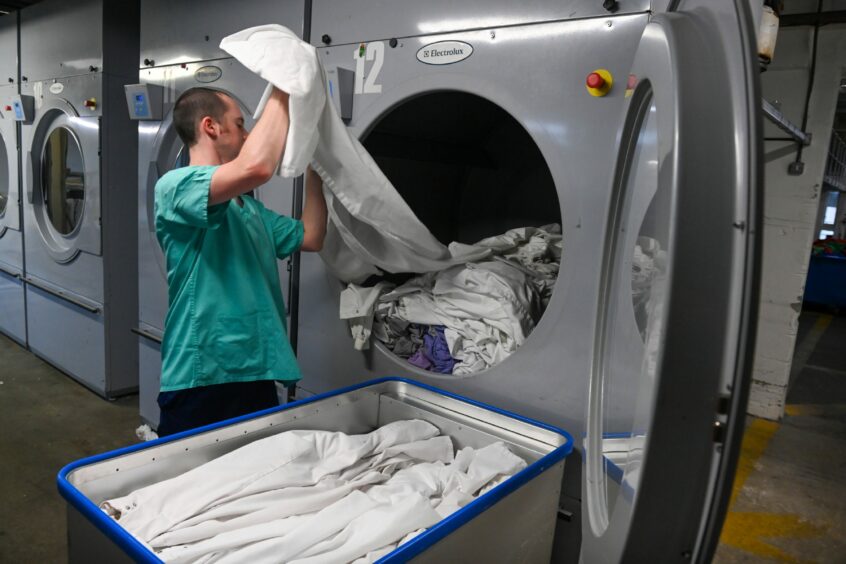
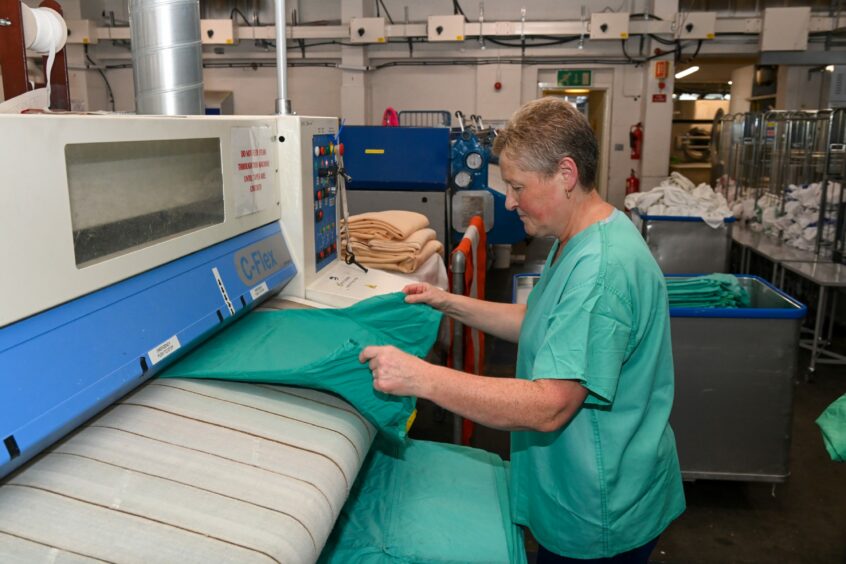

Conversation